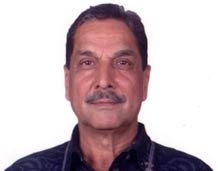IAF Training: The role Flying Clubs can play
On July 31, 2009, a ‘Deepak’ Hindustan Piston Trainer, HPT-32 crashed near the IAF Academy at Dundigal North of Hyderabad killing two instructors. Pending investigations the IAF grounded this basic trainer that has been used for imparting basic training to IAF pilots for nearly 30 years. Later, the IAF decided to stop flying this trainer and changed over its basic training to all jet training on the ‘Kiran’ Hindustan Jet Trainer HJT-16 which has also been around since the early 1970s. Until then the Kiran Mk-I was used for the ‘advanced stage’ training, with its Mk-II variant for applied stage training. Due to shortage of Kiran Mk-II aircraft the IAF had to also close down its prestigious ‘Surya Kiran 9-Aircraft’ Aerobatic Team for the time being. The vaunted AJT Hawk trainers have also just about entered service in small numbers further straining the IAF training machinery.
This is apparently an interim arrangement until the IAF gets a suitable replacement for the HPT-32. The Kiran too is likely to be replaced with the HAL designed and manufactured Sitara, the HJT-36 or the Intermediate Jet Trainer once its production begins in a few years. It is thus reasonable to assume that the IAF would have to rely on the venerable Kiran for training its pilots for some time that may stretch to three to five years with inevitable pressures to keep the Kiran flying at high sortie rates. While this is certainly possible it cannot be called the best arrangement.
Post-1962 Sino-Indian Conflict the IAF embarked on a massive expansion programme and inducted a large number of young men for pilot training. Given the shortage of trainers and instructors at the time the government and the IAF devised a unique scheme under which Elementary Flying Training Units (EFTU) were established at five Civilian Flying Clubs, at Delhi, Patiala, Kanpur, Nagpur and Tambaram near Madras (now Chennai), to provide basic training to around 25 trainees each, in about six months. The idea being that the so-called ‘weeding out’ could be done at relatively low cost in quick time. Successful trainees went on to fly the HAL HT-2 and later the Texan/Harvard T6G and Vampire trainers.
The scheme proved very successful at minimal cost and to an extent also helped rejuvenate the civil flying clubs in the early 1960s; and was closed after a few years.
Today the scene is quite different with a large number of civilian boys and girls training at the 18 odd flying clubs in different parts of the country. Given the nearly two-year long slump in commercial aviation activity the airlines have stopped inducting new pilots and hence the interest in gaining CPL -Commercial Pilot’s Licence, is perhaps waning. This means that the huge investments in basic trainers like the Cessna 152/162/172 and the Diamond-20 and others that many of the flying clubs had made anticipating a surge in the demand for flying training are now at risk with some of the clubs on the verge of closing down. The cost of CPL training in India is around Rs. 20 lakh but the time taken to complete the 200 hours syllabus is long due mainly to shortages of experienced flying instructors.
The IAF should consider utilising the available aircraft and infrastructure at some of these flying clubs for imparting basic training to its pilot trainees before sending them to the Kiran HJT-16. This will undoubtedly save the IAF and the country much money and will also keep the civilian flying clubs in business. The IAF would only have to send a few ‘Qualified Flying Instructors’ (QFIs) to these clubs. Given India’s track record of defence acquisitions, the replacement for the basic trainer is unlikely to enter service for at least three to five years and after two mishaps during its flight test programme, the HJT-36 Sitara to be manufactured by the HAL is equally far away on the time horizon.
Flying training is the ‘bread & butter’ activity of any air force and even a small disruption can have long term impact on its operational readiness and hence a ‘business-as-usual’ approach will not work.
If this suggestion were to be adopted, the IAF and the Ministry of Defence will have to make some basic changes to the current rules, seriously involve the DGCA and private industry and enter into an arrangement where every stake holder stands to gain.








